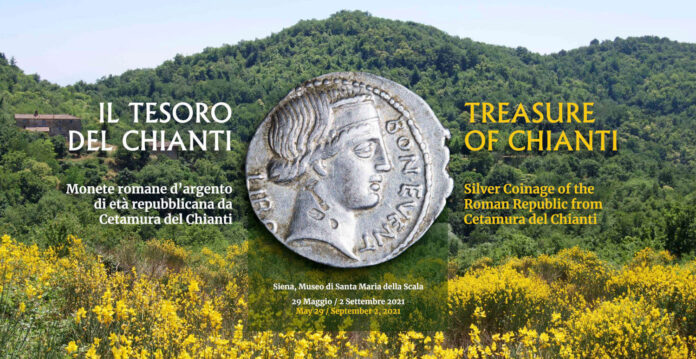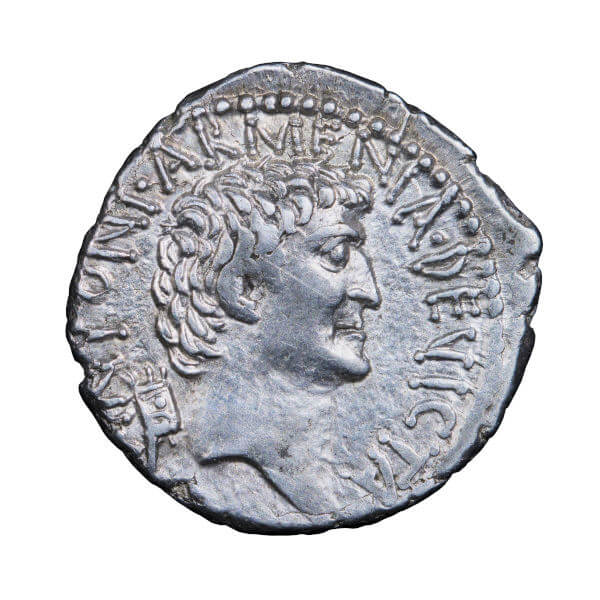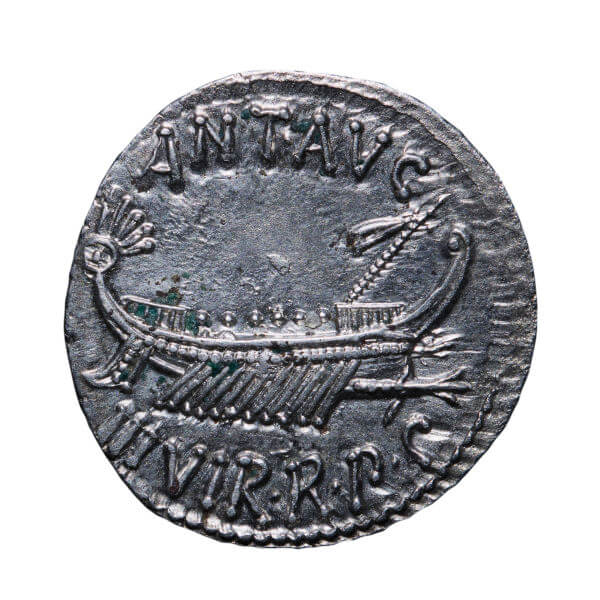In the historic Chianti hills where for centuries the Etruscans built their fortified settlements guarding the ancient border between the cities of Chiusi, Fiesole and Volterra, an archaeological dig conducted by Florida State University under the guiding hand of Nancy de Grummond made an unexpected and indeed unique discovery in the summer of 2015.

Under the astonished gaze of the students from this American university that has been conducting excavations at Cetamura del Chianti (Gaiole in Chianti) in the Badia di Coltibuono area since the 1970s, a small terracotta vase was unearthed which, while seemingly anonymous, clearly contained something exceptional on account of its weight. That content consisted of almost 200 Roman silver coins which had been buried in the earth for 2000 years.
This astonishing discovery was followed by restoration lasting six long years, conducted at the SACI under the supervision of Professor Nòra Marosi, which has restored the coins to their pristine splendor. The coins bear the effigies of Octavian, later Augustus Caesar, of his foe Mark Antony and of Cleopatra. The latest coins in the cache are dated c. 27 BC. The American scholars have tentatively identified the archaeological find as likely to be the savings of a veteran back from the wars (possibly from the Battle of Actium itself, which marked Octavian’s final victory and the start of his rise to power), for we know that with the complete Romanisation of Etruria some of the most attractive areas of the Etruscan countryside were carved up and shared out amongst powerful Senatorial families and veterans. This was also the case with the lands around Saena Iulia, as Siena was known in Roman times. And indeed this treasure trove was unearthed only yards from a large well that for almost 200 years received religious items and hundreds of grape seeds, providing with the first evidence of the Etruscan and Roman wine-growing tradition in the heart of the Chianti region.
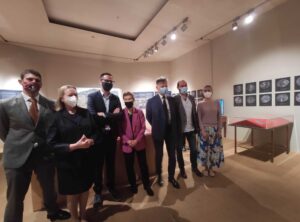
This major discovery, with its attendant restoration and enhancement made possible by the generosity of the Friends of Florence Foundation, was presented at the Complesso Museale di Santa Maria della Scala in Siena at the opening of an exhibition entitled: “Treasure of Chianti: Silver Coinage of the Roman Republic from Cetamura del Chianti”. The exhibition will go on until 2 September 2021.
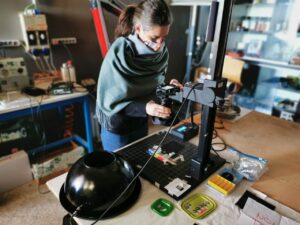
Nora Marosi, restorer with Studio Arts College International (SACI), Florence, added: “It has been most gratifying for me to work on the conservation of the Chianti coins with students as part of a unique teaching experience. More than 100 students at Studio Arts College International (SACI) and Florida State University in Florence had the opportunity to work in person with the process of micro-excavation of the find and the cleaning of the coins. In fact it was in the laboratory with advanced students that we discovered what was in the little jar. X-rays and weighing of the jar had indicated that something very dense was in it, and upon extraction of a few centimeters of soil from the opening at the top we began to see discs of metal with inscriptions.
The careful cleaning of the coins so that the images emerged made possible the study and identification of the coins by Dr. Lora Holland Goldthwaite, with whom it was a pleasure to collaborate. Her research as well as many other facets of our project were generously supported by Friends if Florence.
Our work was not completed when COVID arrived, but thanks to the cooperation of the Soprintendenza Archeologia Belle Arti e Paesaggio per le province di Siena, Grosseto e Arezzo, and Dr. Jacopo Tabolli the project was transferred to the safe environment of the laboratory of Santa Maria della Scala in Siena for completion of the cleaning and for innovative work on RTI photography with Jacopo Mazzoni with the assistance of Federico Ponchio and Marco Callieri, researchers of the Visual Computing Lab of the Institute of Information Science and Technologies, National Research Council (CNR-ISTI)of Pisa. It was an emotional time and we are very grateful to Dr. Debora Barbagli for welcoming us so warmly.
Due to COVID, not all the research in the project has been completed. With funding from Friends of Florence we hope to move on to metallurgical analysis in collaboration with the Institute of Applied Physics of National Research Centre (CNR-IFAC). For the Treasure of Chianti there will be new beginnings.”
A lavishly illustrated catalogue of the find is published by Sillabe Publisher.
Have you ever wondered where coins come from? And how hoards came into being? No one could explain this better than Alan Walker who describes in this three-part series the different types of coin finds and hoards.
Here you can find further information on the Friends of Florence and the Florida State University.
Read more about the exhibition of the coins and the archeological dig of Cetamura del Chianti.



